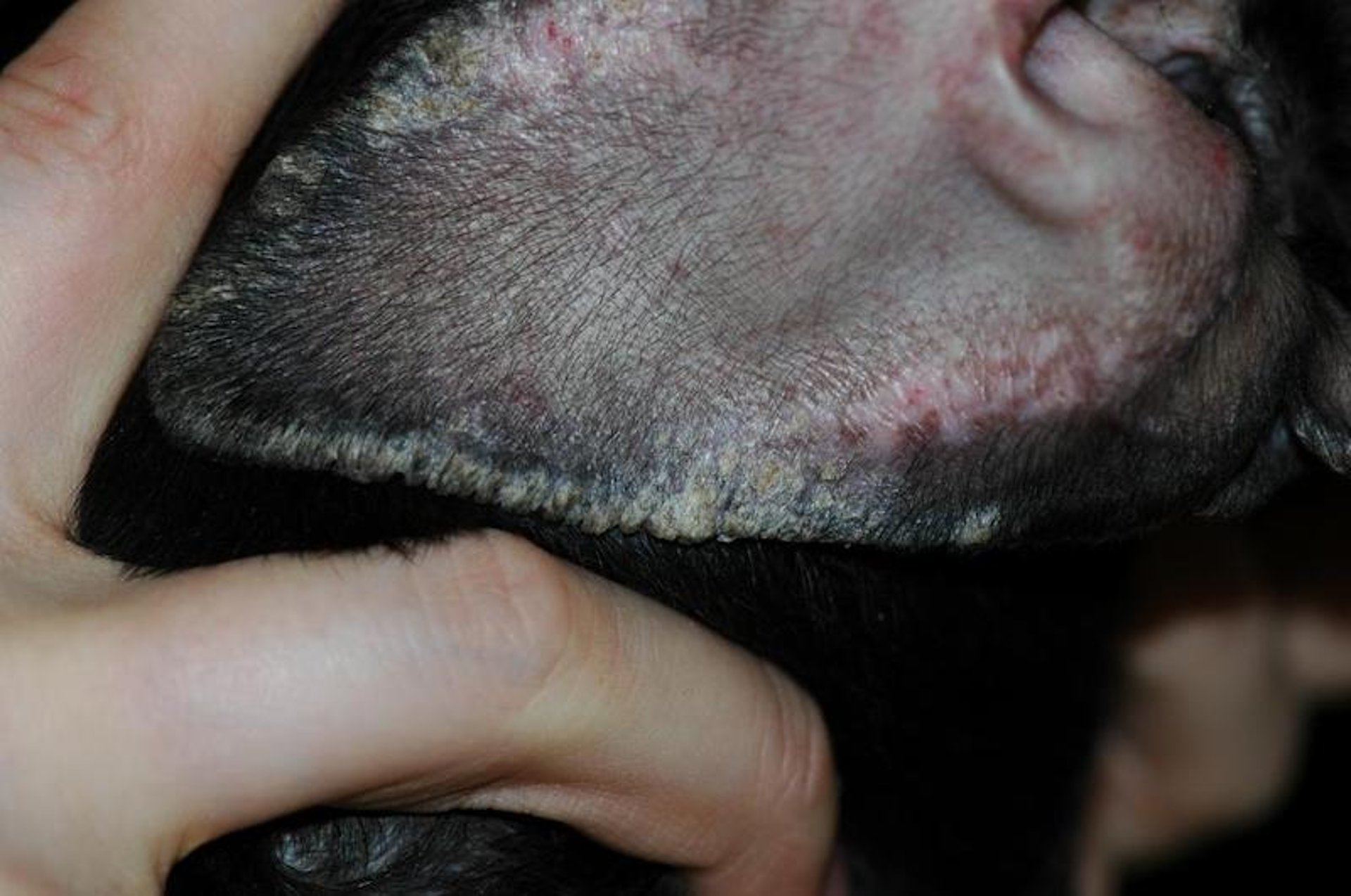Courtesy of Dr. Sheila Torres.
Ear margin seborrhea is common in Dachshunds, although other breeds with pendulous pinnae may be affected. Lesions usually affect the apex of the pinnae on both sides but can progress to involve the whole ear margin.
The cause of ear margin seborrhea is unknown. Lesions appear as waxy, gray-to-yellow scales adherent to the base of hair shafts. Plugs of hair can be easily epilated, leaving behind a shiny surface to the skin. In severe cases, the ear margins are edematous and fissured. Histologic findings include severe hyperkeratosis and follicular keratosis with dilated follicles filled with keratin debris.
Differential diagnoses of ear margin seborrhea include:
proliferative thrombovascular necrosis
frostbite
Dermatophytosis, in particular, can cause a scaling pinnal dermatitis in dogs, cats, and horses, but the ear margin is not typically involved and other areas of the body are generally affected as well.
Treatment includes antiseborrheic shampoos (eg, sulfur, salicylic acid, benzoyl peroxide), keratolytic products such as salicylic acid gel, or topical moisturizers. Systemic medications that may help normalize the abnormal keratinization process include vitamin A and essential fatty acids. Topical or oral glucocorticoids and oral pentoxifylline (10–15 mg/kg, PO, every 8 to 12 hours) may be beneficial when severe inflammation and fissures develop.
For More Information
Also see pet health content regarding seborrhea in dogs.
